Refine Droopy or Bulbous Nasal Tips for a
Beautifully Natural Nose Line
Defined and Elevated Nose Line
Without Artificial Implants!
Implant-free
Nasal Tip Surgery
Your form has been submitted
Thank you %NAME% for submitting your inquiry.
We have received your answers. We will contact you asap.
We faced problems while connecting to the server or receiving data from the server. Please wait for a few seconds and try again.
If the problem persists, then check your internet connectivity. If all other sites open fine, then please contact the administrator of this website with the following information.
TextStatus: undefined
HTTP Error: undefined
Some error has occured.
Refine Droopy or Bulbous Nasal Tips for a
Beautifully Natural Nose Line
Defined and Elevated Nose Line
Without Artificial Implants!
Implant-free
Nasal Tip Surgery
* Image Model
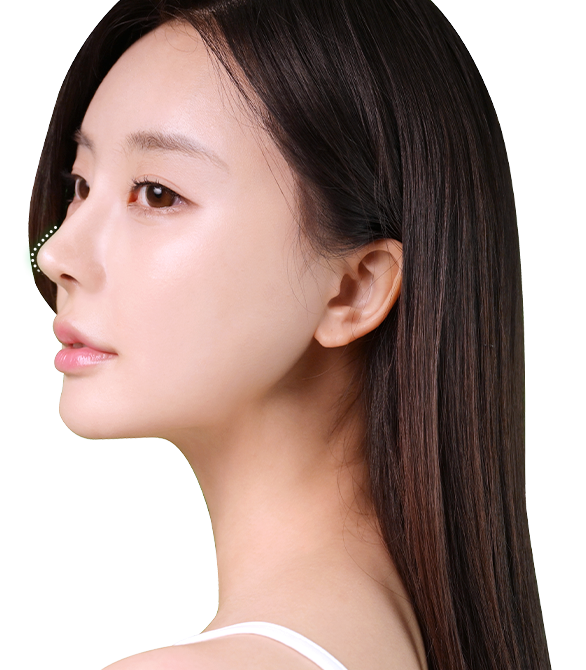
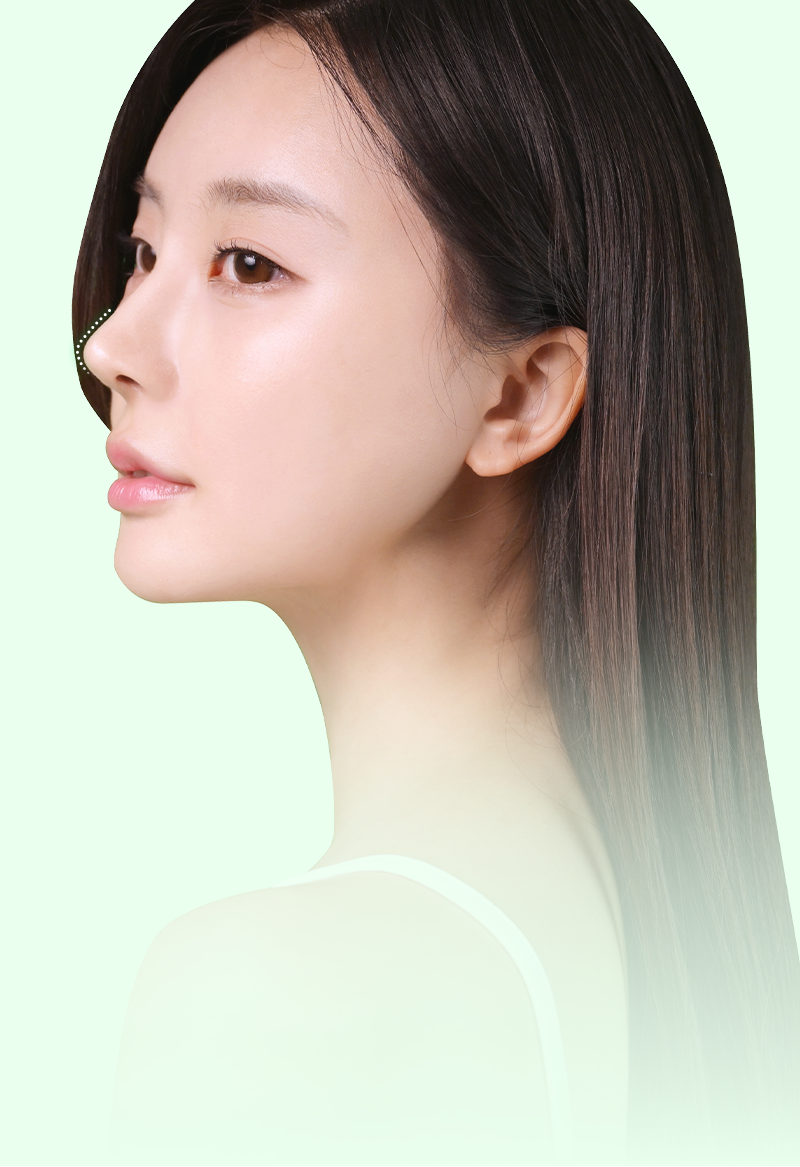
Achieve a Naturally
Elevated and Beautiful
Nose Line with
Autologous
Tissue No Need to Worry
About Artificial Implants!
Implant-free rhinoplasty uses only autologous tissue without relying on artificial implants. This procedure is ideal for cases where the bridge is high,
but the tip is low or bulbous, or when the tip is overly pointed. Without the insertion of artificial implants, the nasal tip is corrected to be naturally
elevated and safely refined. At View Plastic Surgery, we carefully measure and design the angle, shape, and height of the nose to create
a beautifully contoured nose line that enhances the face’s three-dimensional appearance. Our implant-free rhinoplasty ensures a natural,
harmonious, and elevated nose line.
Implant-free rhinoplasty uses only autologous
tissue without relying on artificial implants.
This procedure is ideal for cases where
the bridge is high, but the tip is low or bulbous,
or when the tip is overly pointed.
Without the insertion of artificial implants,
the nasal tip is corrected to be naturally elevated
and safely refined. At View Plastic Surgery,
we carefully measure and design the angle, shape,
and height of the nose to create a beautifully
contoured nose line that enhances the face’s
three-dimensional appearance. Our implant-free
rhinoplasty ensures a natural, harmonious,
and elevated nose line.
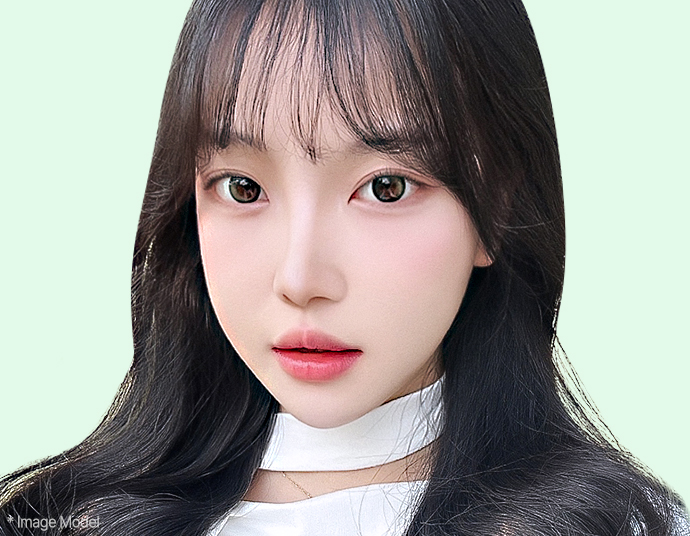
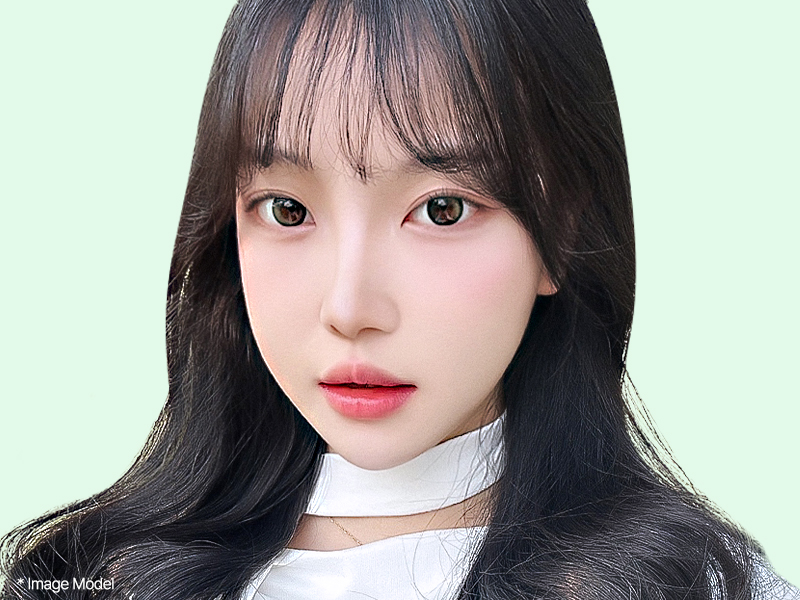
VIEW Is Art!
Rhinoplasty, Of Course,
Starts With VIEW!
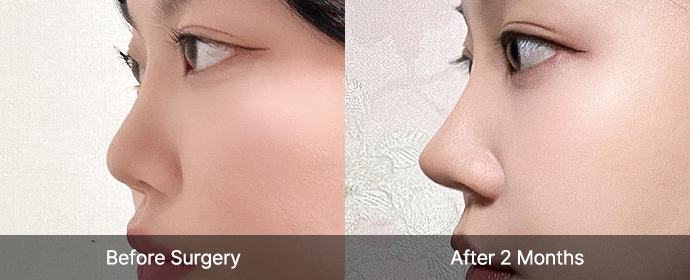
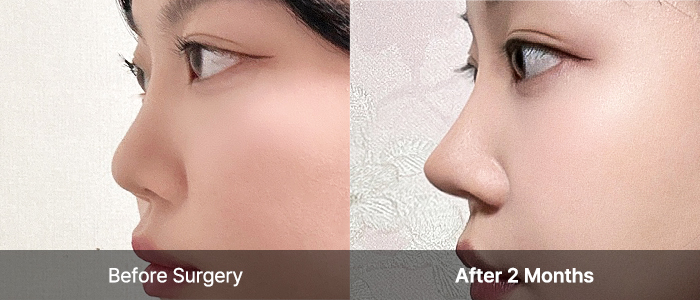
* This image was taken and published with the patient’s consent.
* Surgical results may vary depending on individual circumstances.
Minimized Side Effects,
Natural Shape,
and Movement
MERIT 01.
Minimized inflammation
and side effects through
the
use of autologous
tissue instead
of artificial implants
MERIT 02.
Low foreign
body
sensation
by harvesting
and grafting
autologous tissue.
MERIT 03.
Reduced
psychological
anxiety
about side
effects associated
with artificial implants.
MERIT 04.
Improved
nasal line
with a
naturally
beautiful shape
and movement.

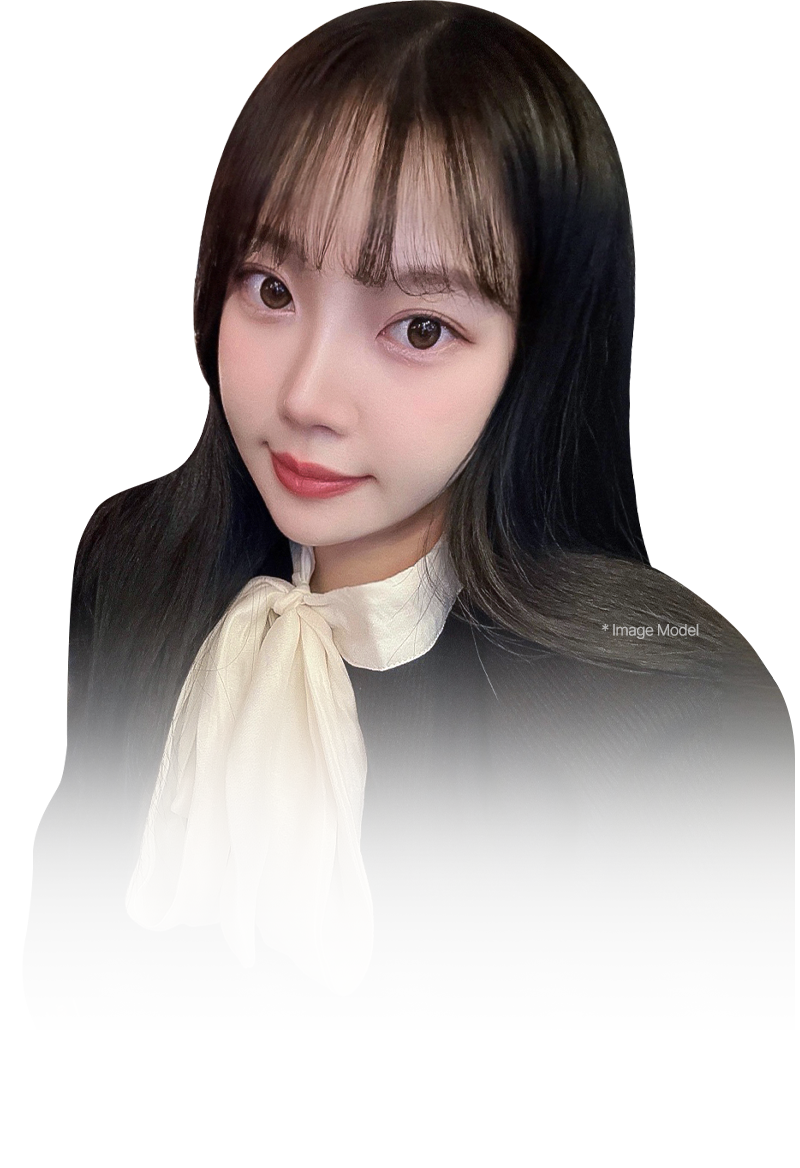
Achieve a Beautifully
Elevated Nose Line
Without Implants
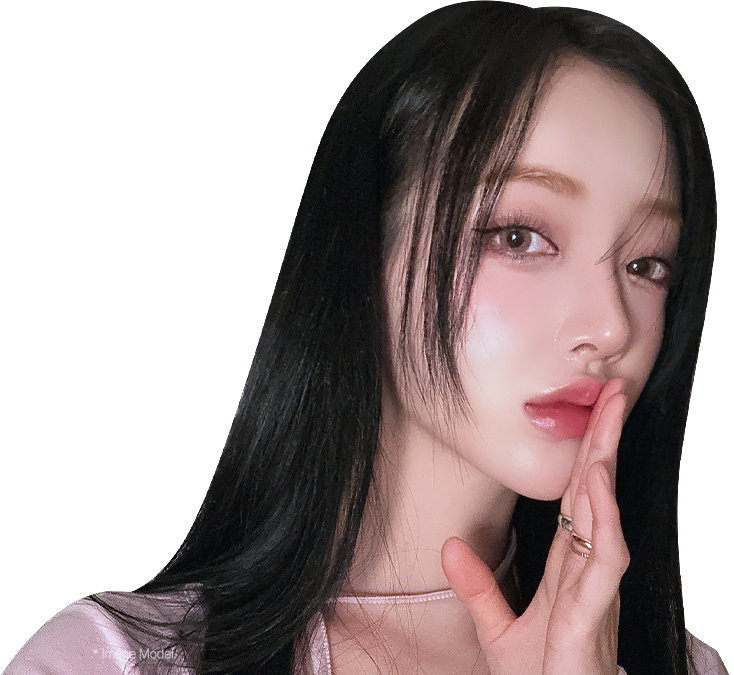
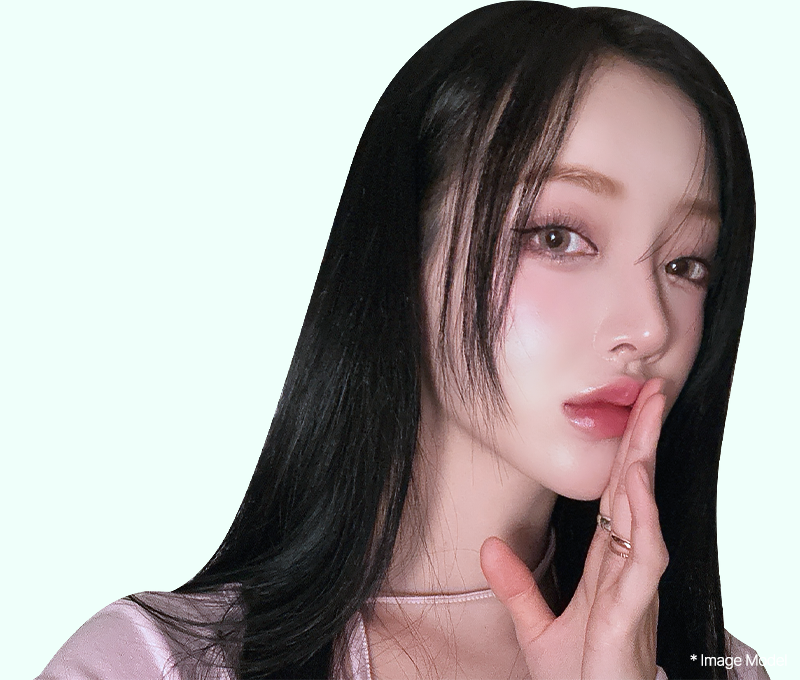
Those with a high nasal bridge but are unsatisfied
with
their nasal tip line and wish to refine it.
Individuals concerned about side effects from
implants or
who feel uncomfortable with the use
of artificial implants.
Patients worried about complications associated
with artificial implants.
Those seeking semi-permanent results from
nasal tip surgery.
Individuals looking for revision surgery without the
risk of
contracture or other side effects caused
by artificial implants.
“VIEW” Implant-free
Nasal Tip Surgery
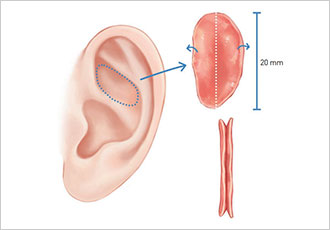
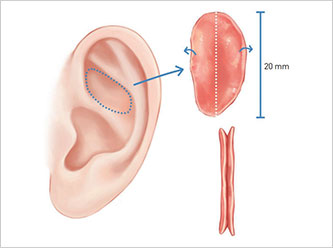
Ear Cartilage
A natural choice for
shaping the tip of the
nose, with minimal risk
of transparency
due to
its autologous nature.
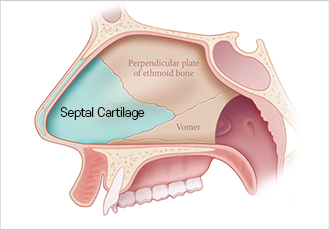
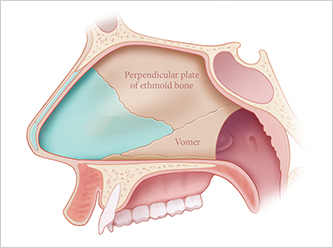
Septal Cartilage
Cartilage from inside the
nose,
most commonly
used in rhinoplasty as a
foundational
autologous material.
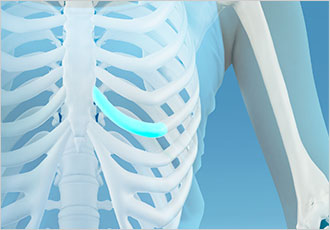
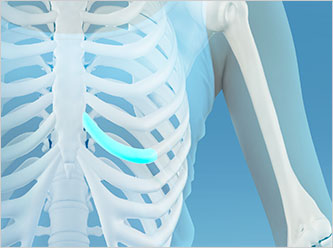
Rib Cartilage
Used when ear cartilage or septal cartilage
is insufficient or when a stronger,
more durable cartilage is required.
Used when ear cartilage
or septal cartilage is
insufficient or when a
stronger, more durable
cartilage is required.
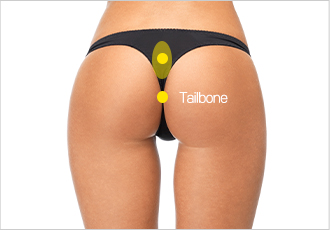
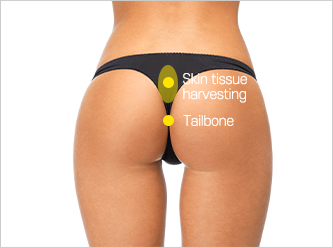
Autologous Dermis
An autologous material
used for thin nasal
skin
or when there is a lack
of soft tissue
on the
nasal bridge.
Achieve Perfection
to the Tip!
CASE 01. For a Typical Nasal Tip Shape


In cases where the nasal tip is slightly low
and bulbous but not severely so,
correction is performed by suturing the flared
alar cartilage to refine the nasal tip.
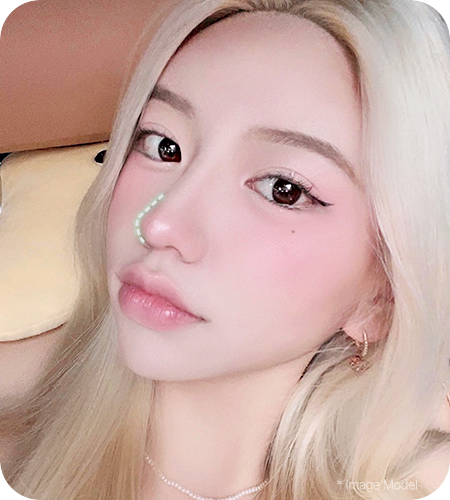
CASE 02. When the Nasal Tip
Needs to Be Elevated


When the nasal tip needs elevation,
suitable materials like autologous cartilage
or dermis
are inserted, and the flared alar cartilage
is sutured to achieve the desired height and shape.
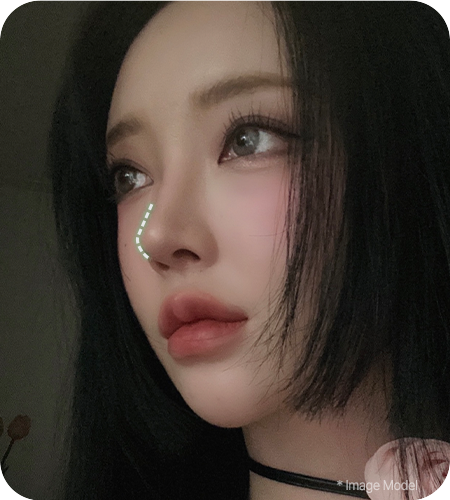
CASE 03. When Strong Nasal Tip
Support is Required


In cases of a short nose or upturned nose,
strong structural support is essential
to maintain
a stable and beautiful nose line.
Additional cartilage (septal cartilage graft) is placed
on a firmly supported cartilage base
to ensure durability and aesthetic balance.
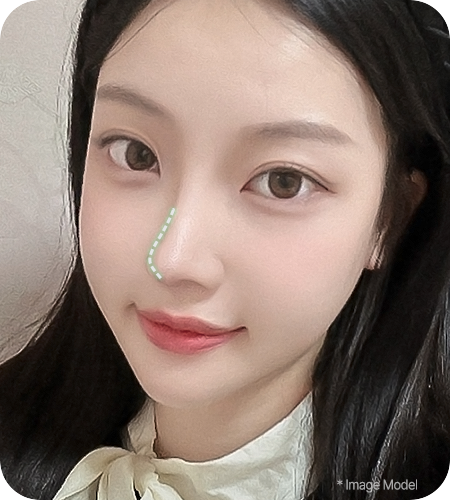
Refine Your Look from
Plain to Sophisticated
with Nasal Tip Correction!


Minimized Warping
Through
3D-CT Precision
Analysis and
Advanced
Expertise
Using 3D-CT imaging, we conduct a detailed analysis
of both aesthetic and functional nasal issues. With years of
experience and accumulated technical expertise, we ensure
fast and precise surgeries, minimizing the risk of warping.
Additionally, our specialized medical team, including
anesthesiology and plastic surgery experts, collaborates
to deliver accurate and safe surgical outcomes.
Using 3D-CT imaging, we conduct a detailed
analysis of both aesthetic and functional nasal
issues. With years of experience and accumulated
technical expertise, we ensure fast and precise
surgeries, minimizing the risk of warping.
Additionally, our specialized medical team,
including anesthesiology and plastic surgery
experts, collaborates to deliver accurate and safe
surgical outcomes.


Customized Facial
Proportions
Detailed Design of
Nasolabial Angle,
Columella Shape, and Angle
By analyzing the overall proportions of each individual's facial
features, we design the nasolabial angle and columella length
to best complement your facial structure and nose-to-face ratio.
The surgery creates a balanced, three-dimensional nose line
that looks harmonious from every angle.
By analyzing the overall proportions of each
individual's facial features, we design the
nasolabial angle and columella length to best
complement your facial structure
and nose-to-face ratio. The surgery creates a
balanced, three-dimensional nose line that looks
harmonious from every angle.


Without Artificial Implants,
Achieve a Natural and
Beautiful Nasal Tip
Using autologous cartilage and sterilized dermal tissue,
we create a nasal tip line that is free from noticeable alterations
and looks naturally elegant. This approach minimizes the risk
of allergic reactions and inflammation, ensuring a safe and
seamless result.
Using autologous cartilage and sterilized dermal
tissue, we create a nasal tip line that is free from
noticeable alterations and looks naturally elegant.
This approach minimizes the risk of allergic
reactions and inflammation, ensuring a safe and
seamless result.


Since 2005
Proven Expertise at “VIEW”
Through Numerous Reviews
Since 2005
Proven Expertise at “VIEW”
Through Numerous
Reviews
Since its founding in 2005, VIEW has earned recognition through
numerous positive reviews and extensive experience with diverse
cases, skillfully correcting both internal structures and external
appearances to create naturally beautiful and refined nose lines
tailored to any shape or desired style.
Since its founding in 2005, VIEW has earned
recognition through numerous positive reviews
and extensive experience with diverse cases,
skillfully correcting both internal structures and
external appearances to create naturally
beautiful and refined nose lines tailored to any
shape or desired style.
Rhinoplasty
All-In-One System
An optimized system covering consultation,
examination,
surgery, recovery, and aftercare.
Personalized Aftercare
We provide a tailored and systematic
post-surgery care program to promote quick recovery
and minimize concerns about scarring.
AftercareLearn moreRhinoplasty
All-In-One System
An optimized system covering consultation,
examination,
surgery, recovery, and aftercare.
In-House Examination Center
With our in-house examination center, we offer a one-stop system
that ensures safe surgery and comprehensive aftercare,
covering everything from pre-surgery evaluations
to post-surgery check-ups, all within a single facility.
AftercareLearn moreEnhanced Longevity!
Perfectly Matches
Your Face Over Time








‘VIEW’ Rhinoplasty
Real Selfies
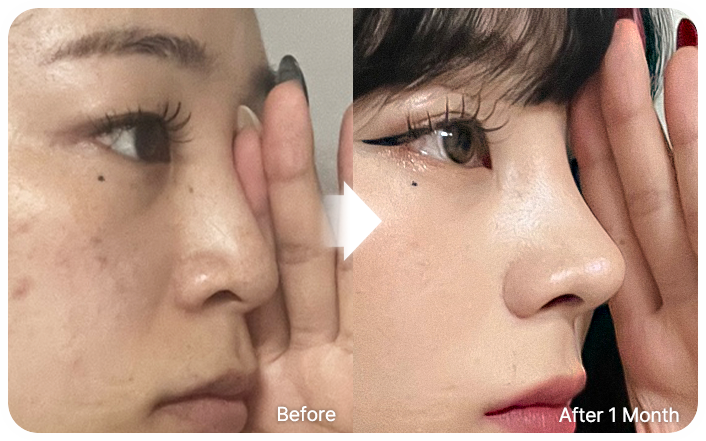

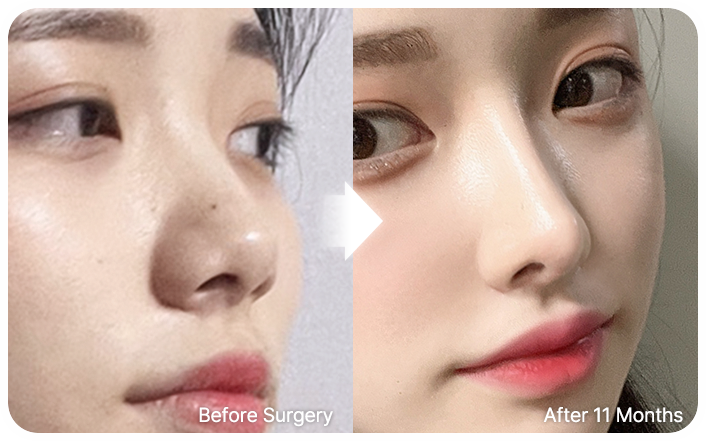

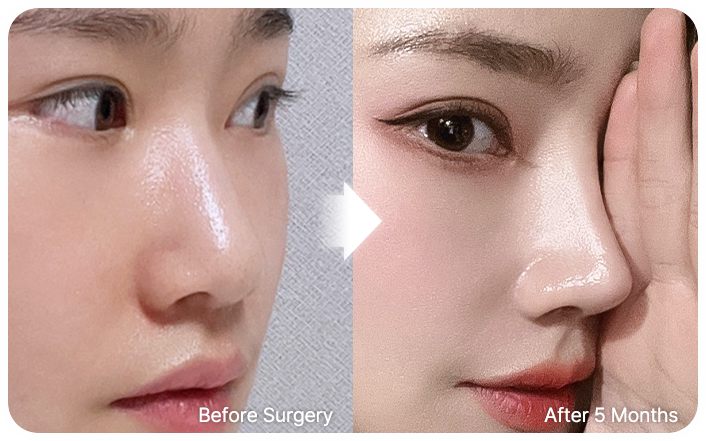

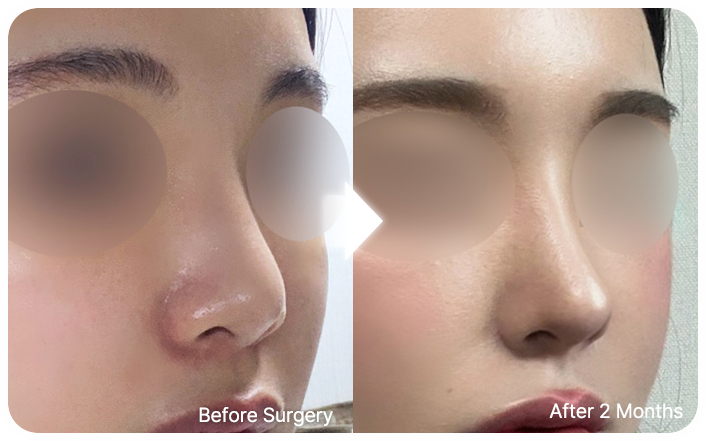

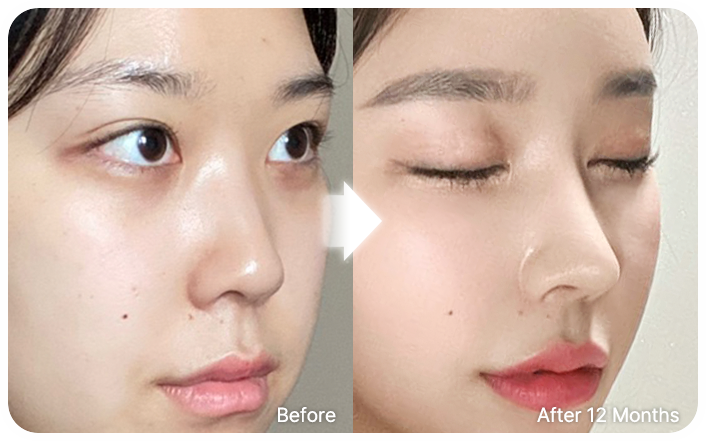

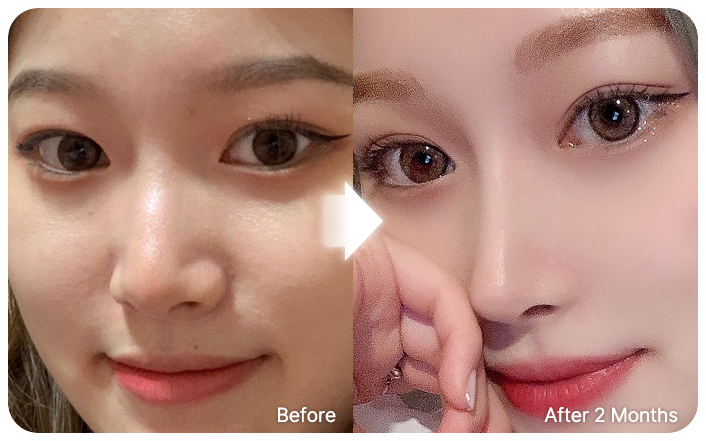

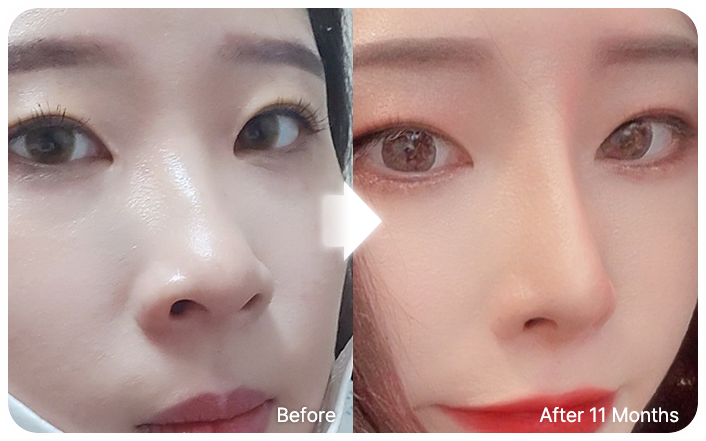

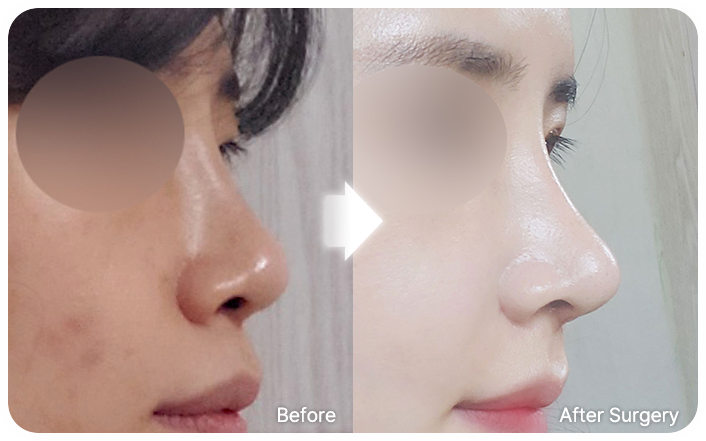

VIEW Plastic Surgery’s


Based on Ideal Proportions
A Beautiful Nose
with
No Deformities
Through
Personalized 1:1 Surgery
Since every individual has unique facial features and proportions,
simply raising the nose bridge is not enough. At VIEW,
we perform a detailed, multidimensional analysis of each patient's
overall facial structure, including the proportion of features,
forehead-to-nose angle, and nasolabial angle. Using this analysis,
we design the most suitable line for each individual, determining
the ideal height for the bridge and tip. With carefully selected
implants, we ensure long-lasting, deformation-free results that
deliver high satisfaction over time.
Rather than simply raising the nose bridge,
we conduct a detailed analysis to determine the
most suitable line and ideal height for the
bridge and tip, designing and using customized
implants to deliver long-lasting, deforma-
tion-free, and highly satisfying results.


Plastic Surgery and
ENT Specialists
Collaboration System
VIEW Plastic Surgery offers a collaborative
system between
plastic surgeons and
ENT specialists. Through 3D-CT and
endoscopic
diagnosis, we address discomfort caused by
nasal conditions such as nasal congestion,
rhinitis, and
sinusitis, while refining the nose line
to create a more defined
and harmonious
appearance.


Establish a Surgical Plan
after
a Precise Examination
of the
Internal Nasal
Structure and
Tissue
Condition
Using nasal
Endoscopy and
3D-CT
Through detailed examinations of the internal
nasal structure
and tissue using 3D-CT and
endoscopy, we accurately
diagnose hidden
issues. Based on these findings,
we identify
the exact causes and develop a
personalized 1:1 surgical plan
tailored to each
patient.


On-Site Insurance
Specialist for
Medical Guidance on
Nasal
Disorder Surgeries
Surgeries for nasal conditions causing issues like nasal
congestion and chronic headaches are classified as treatment
procedures and may be eligible for medical expense
reimbursement. At VIEW Plastic Surgery, an on-site insurance
specialist is available to guide you through the process and help
you access medical reimbursement benefits.
Surgeries for nasal conditions, classified as
treatment procedures eligible for medical
expense reimbursement, are supported at
VIEW Plastic Surgery with an on-site insurance
specialist to assist you.
*Medical reimbursement eligibility varies depending on your
insurance policy
coverage.
*For detailed information, please contact your insurance provider.


From Implants to
Autologous
Tissue
Personalized Prosthetics
for
Each Individual
Depending on the shape of the nose and the
degree of change
desired, we select the most
suitable prosthetic material, from
implants to
autologous tissue, to perform a fully customized
pro-
cedure. Experienced plastic surgeons with
in-depth
knowledge of the characteristics,
advantages,
and disadvantages of all materials
develop the optimal
surgical plan for each patient.
Confident in Every Nose
There is no fixed answer in rhinoplasty.
At VIEW Plastic Surgery, we do not perform the same surgery
on everyone. With the rich expertise and aesthetic sense of
our dedicated rhinoplasty specialists, we focus on each
individual patient, considering their desired improvements,
facial structure, and current condition to create the ideal
nose line for them.
At “VIEW,” we don’t perform the same surgery for
everyone. Instead, our dedicated rhinoplasty
specialists focus on each individual patient,
leveraging their extensive expertise and aesthetic
sense to create the ideal nose line tailored to each
person’s unique needs and preferences.
* Image Model


A sleek and defined line
that runs straight from
the bridge
to the tip
without any curves,
creating a sharp and
sophisticated image.


A line that forms a
gentle curve from the
bridge to the tip,
offering a more natural
and soft appearance
compared
to the
traditional curved line.


Closer to a straight line
than the semi-curved
line,
with softer and
more gradual slopes,
exuding an elegant
and
refined image.
* Image Model
For Healthy and Beautiful
Results


Surgery Day


Progress Check
3 Days After


Surgical area
Check and Dressing
1 Week After


Begin the care
program after removing
the nasal splint
1 -3 Months


Regular Progress Check
* Subject to Change Based on Individual Conditions. *
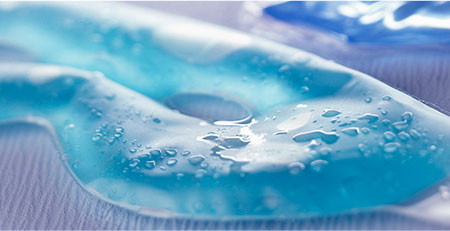

We provide self-care
education and products
to help reduce swelling.
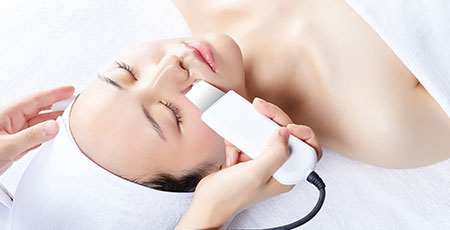

We provide personalized
aftercare based
on
individual recovery speed
to aid in faster
and
healthier recovery.
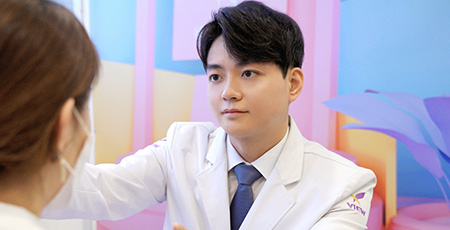

The attending physician
who performed the
surgery
carefully checks
the progress and recovery
process.
Address
107, Bongeunsa-ro, Gangnam-gu, Seoul, Korea
(201-14 Nonhyeon-dong)
Nearest Subway Station: Sinnonhyeon Station, Line 9
Working
hours
Weekday : AM 10:00 – PM 7:00
Friday : AM 10:00 – PM 9:00 (Late Treatment)
Saturday : AM 10:00 – PM 5:00
Tel.
02-539-1177
VIEW is recognized
worldwide
View Plastic Surgery's medical technology,
professional medical staff,
and safety systems are recognized worldwide
Clients from all over the world visit View Plastic Surgery.

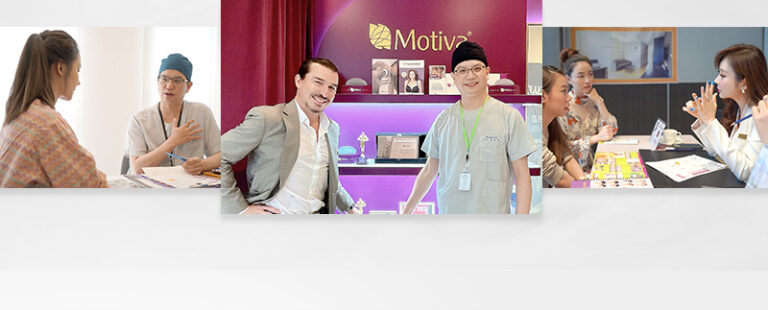












There may be complications such as bleeding, infection, and inflammation after surgery. Subjective satisfaction may vary between individuals.
Address: 107, Bongeunsa-ro, Gangnam-gu, Seoul, Korea (201-14 Nonhyeon-dong)
Tel : +82-2-539-1177 | Fax : 02-539-1132
Business Name : View Plastic Surgery | CEO : Choi Soon Woo | License No. : 220-08-86777
ⓒ Copyright COPYRIGHT©2017 View Plastic Surgery. ALL RIGHTS RESERVED.


* Image Model